
Last week my wife and I reserved for the morning one of the meeting rooms at Broadway Commons. Over coffee and muffins, we took a “mini-retreat,” looking back at 2015 and ahead to 2016 through the lens of our most important values: physical and spiritual health, the health of our marriage and family, meaningful work, and a few others.
One value we discussed was what we termed Neighborhood Flourishing. We started by imagining what our new neighborhood would look like in five years if it was more connected, more hospitable, safer, and more loving. (Later we got our eight-year-old involved in this activity too.) Then we identified a few tangible things we could do in the next 12 months to help make that vision a reality. These became our “neighborhood resolutions.” Here are a few examples:
- We will be a more active presence at the city park located a half-block from our home, meeting our neighbors there, and even occasionally bringing a thermos of coffee to share with other parents.
- We will invite our immediate neighbors into our home to share a meal.
- We will humbly and yet proactively share our vision for “neighborhood flourishing” with a few kindred spirits.
Most New Year’s resolutions are focused on personal improvement. Get in shape. Quit smoking. Get organized. Read more. These are great, but what if we made some resolutions to help improve our places too? Here are a few ideas:
1. MEET YOUR NEIGHBORS
According to the Pew Research Center, only 43% of Americans know most or all of their neighbors. Knowing your neighbors not only makes life richer, it is the first step in weaving a fabric of care in your community. A growing body of research suggests that neighborhood connectedness leads to more active citizens, greater happiness, and greater resilience in the face of crisis. Meeting your neighbors doesn’t have to be as stagy as what this guy did. Some easier ways:
- Learn their names
- Take walks around your neighborhood
- Live more of your life in your front yard
- Bring a welcome basket to a newcomer
- Make too much of your favorite dish and share a plate
- Attend a neighborhood meeting
- Ask for help
- Offer help
2. GO ON WALKS
Walking the neighborhood is one of the simplest, yet most intimate and illuminating community-building practices. History, demographics, sociology, economics, justice, hopes, dreams, fears — they all come to life as we encounter real people in real places…at the patient pace of step-by-step. It can be done by yourself, with a friend or partner, or with the whole family. Walking is one of the best ways to meet your neighbors. It also slows you down enough to notice the cultural and natural rhythms of your place. You begin to see other details too: the gentle rise in elevation, or the subtle ways in which the built environment makes it more difficult for people in your neighborhood to come together. There’s the added bonus of the health benefits too — lower blood pressure, reduced risk of cancer and osteoarthritis, improved heart health, improved mood, etc. How about that? A neighborhood resolution that helps with your other resolutions too.
It turns out the placemaking benefits of walking have long been known:
[The pedestrian] is not isolated, but one with things, with the farms and industries on either hand. The vital, universal currents play through him. He knows the ground is alive; he feels the pulses of the wind, and reads the mute language of things. His sympathies are all aroused; his senses are continually reporting messages to his mind. Wind, frost, ruin, heat, cold, are something to him. He is not merely a spectator of the panorama of nature, but a participator in it. He experiences the country he passes through — tastes it, feels it, absorbs it; the traveller in his fine carriage sees it merely.— John Burroughs (1895)
3. HOST A SOUP NIGHT
A couple years ago we started a weekly Soup Night group in our home. Every Sunday night, anywhere from 10 to 35 people crowded into our living room for great food and great conversation. At the center of our feast were two types of soup, one of which was vegetarian and gluten-free. (We called it our “inclusive soup,” because it allowed everyone to participate — even those who had to abstain from certain types of food because of allergies or matters of conscience.) We had a great time, and we look forward to starting (or joining) something similar in our new neighborhood. We were inspired by a wonderful book called Soup Night: Recipes for Creating Community around a Pot of Soup, by Maggie Stuckey (IndieBound). Highly recommended!
4. BUILD A LITTLE FREE LIBRARY
Another neighborhood resolutions for my family in 2016 is to build a kid-centric Little Free Library next to the path that runs alongside our house to the park. Little Free Libraries are free book exchanges that promote literacy and a sense of community. The nonprofit organization Little Free Library, Ltd. initially set out to inspire the creation of 2,510 Little Free Libraries, the same number of libraries Andrew Carnegie helped build more than a century ago. Today, there are an estimated 30,000 Little Free Libraries around the world! The organization’s website is a treasure trove of useful resources — including plans, kits, stories, a robust FAQ section, a Google map of Little Free Libraries, and more.
Little Free Libraries come in all shapes and sizes. Check out these Pinterest boards for inspiration, or just for the fun of it:
- Little Free Libraries (Somer Library)
- Little Free Libraries (Sue Ming)
- Little Free Libraries (Cedar Falls Public Library)
- Little Free Libraries (ALA Headquarters)
5. VISIT A LOCAL SENIOR OR SHUT-IN
I recently read a blog post that opened my eyes to the prevalence and consequences of senior isolation. According to the 2010 U.S. Census, 11 million people over the age of 65 live alone. While living alone doesn’t necessary mean that a senior is socially isolated, far too many older adults are. Isolation can affect physical and mental health, make seniors more vulnerable to elder abuse, and make them more vulnerable during natural disasters, dangerous weather, and other crises too. We’ve been blessed to have some wonderful older neighbors over the years. They became friends, “great-grandparents” to our children, and mentors who taught us a lot about the history of our neighborhood and how to live well in it. We tried to reciprocate by helping out with projects around their home, checking in on them regularly, and just being good company. Who are the seniors and shut-ins in your neighborhood?
6. INVEST LOCALLY
Locally owned businesses are the cornerstone of community prosperity. We all know the benefits of shopping local, but there is a growing movement toward local investing — and an increasing number of tools and organizations that make local investing easier and more effective. New crowdfunding rules make it possible for all individuals — and not just the wealthiest accredited investors — to invest in private startups and small businesses. What are some other ways you can support your local economy? You can move your money to a bank or credit union that invests in local businesses. (Here’s a toolto help you find such a bank.) You could also start or join a Slow Money investment club. Slow Money brings money literally “down to earth” by supporting a new generation of entrepreneurs and investors who measure success not just by return-on-investment but on how our economic activities strengthen neighborhoods, promote cultural and ecological diversity, and contribute to resilient local communities. To date, Slow Money has invested over $45 million in 450 small food enterprises around the United States.
7. “REPAIR” AN INTERSECTION
Have you ever been driving or biking through a neighborhood and come across one of those vibrantly painted intersections? Maybe it depicted a tree, a flower, native wildlife, a sun or rainbow, a labyrinth or a Celtic knot, or a group of people. And maybe a couple of the corners were outfitted with benches to encourage lingering. This is called “intersection repair,” and more and more of these projects are appearing in all kinds of communities — urban, suburban, and rural. Portland’s City Repair Project, which has provided a lot of energy and expertise for these initiatives, says that intersection repair “[reclaims] the street as a shared public space and as an important venue for local culture.” Friends of mine who have led or participated in intersection repair agree. They describe how these projects slow traffic, become natural gathering places for the neighborhood, provide a useful landmark for navigation. And this is after they bring neighbors together to design and paint. Maybe more than anything, they are a sign that this neighborhood is alive and active and loved.
8. CREATE A COMMUNITY GARDEN
Community gardens have many benefits. They increase food security, improve access to healthy foods in food deserts, reduce obesity, promote the consumption of fruit and vegetables, and increase community connectedness. Imagine transforming a neglected corner or a vacant lot into a garden overflowing with life. The website of the American Community Gardening Association is a great place to start. It includes resources on garden management, conservation, garden culture, youth and school programs, and much, much more. If creating a community garden sounds like too much work, start smaller. For example, why not turn that strip of land between your sidewalk and the curb — technically it’s called a “road verge” — into an edible landscape?
9. START A COMMON CHANGE GIVING CIRCLE
My wife and I would also like to start a Common Change group in 2016. Leveraging technology to engage individuals in relational giving, Common Change makes it possible for friends and neighbors to pool their money to help others in need — with an unexpected medical bill, a costly car repair, etc. One of the rules of Common Change is that giving is on a one degree of separation basis, so it is highly relational. Someone’s practical needs are being met even as they are being enfolded into a circle of care. In the words of Common Change, community-supported micro philanthropy blends “high-tech” with “high-touch.” The video below will give you an idea how Common Change works:
10. COME UP WITH NEW YEAR’S RESOLUTIONS THAT BEST FIT YOUR OWN NEIGHBORHOOD
The neighborhood resolutions we’ve looked at up until this point are just to get the conversation going. I’ve seen them work in my own neighborhood, and in the neighborhoods of friends. But they might not be right for where you live. Maybe the best thing you can do in the coming year is to meet with your family and neighbors to envision together what a more flourishing neighborhood looks like five, ten, even fifty years from now. From there, you can decide on a few tangible things you can work on together now. Supposedly only 8% of people follow through on their New Year’s resolutions. I’m guessing we would be more likely to succeed if we had the whole neighborhood behind us!
Questions: What neighborhood resolutions are you making in 2016? How will you get other neighbors involved?
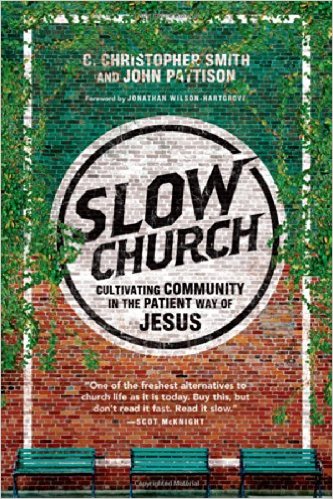

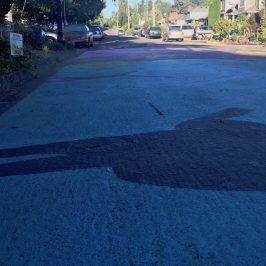
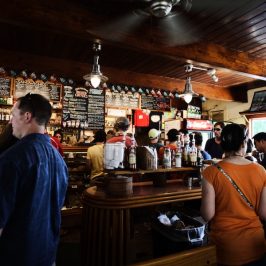

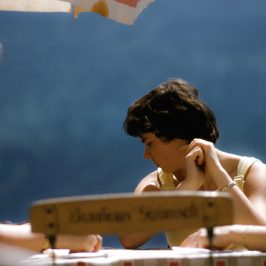



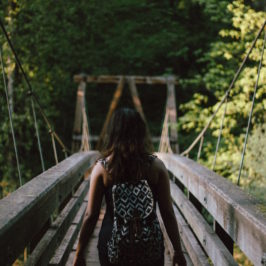
Leave a Reply